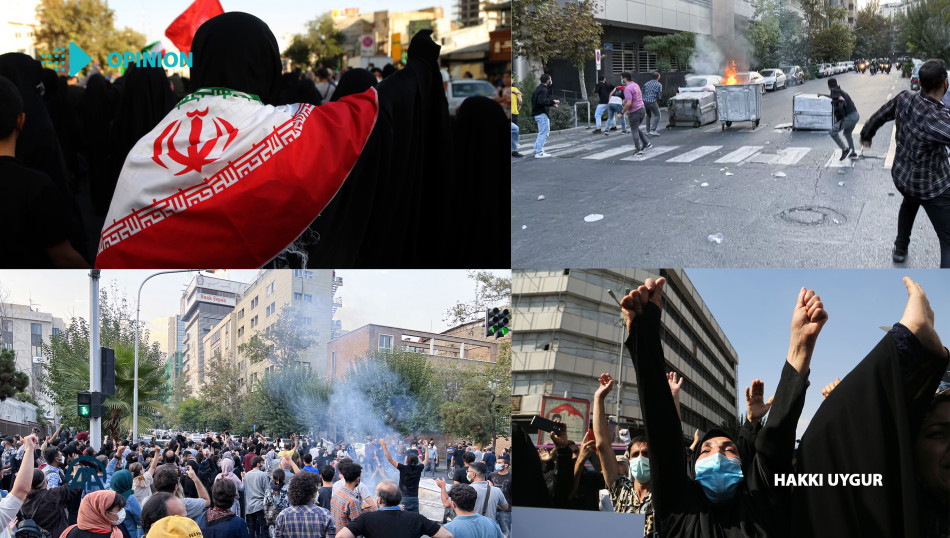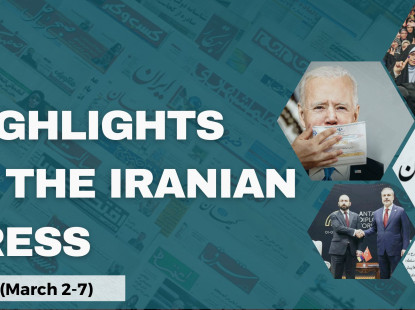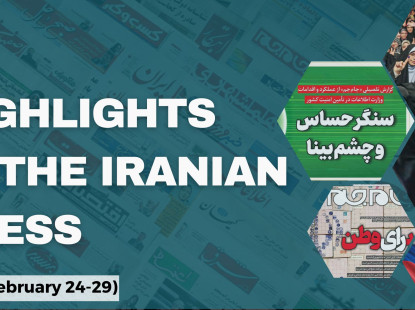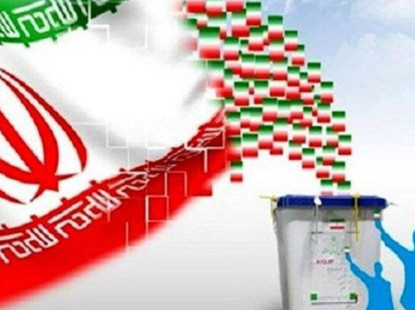Domestic Outlook of Iran After 2022
Iran ended 2022 with the protests that took place after the death of Mahsa Amini on September 19 and spread to the whole country in more than three months. It may follow a dynamic course also in 2023 in terms of its domestic political outlook. The demonstrations that started against compulsory hijab after Mahsa Amini's death soon turned into protests in which Sunni groups, mostly Kurds and Baloch people, came into prominence, and this situation showed itself in the high number of deaths. The demonstrations in the capital Tehran, which were mostly attended by the middle-upper class, did not receive great support despite all the discomforts of the large masses from the current administration. Consequently, it turned into protests carried out by university students, usually led by elite segments such as artists and athletes. During the process, the Persian media and opposition activists abroad came to the fore, and the reformist segment in the country has been largely silent while the different political groups turned the events into a power-sharing ground in the political scene for the post-Khamenei era. Nevertheless, the state’s inability to suppress the events in a short time and its unwillingness/incapacity to use the traditional iron fist method has raised some questions. The significant decisions that Khamenei will make in the new year concerning domestic and foreign policy may mark Iran's near future.
The Meaning of the Amini Protests
Because the young woman, who lost her life, came to Tehran from the Kurdistan region for a trip, the protests started to be held primarily in the Kurd-populated provinces. The issue quickly came to the agenda of Kurdish political groups in other countries. For example, Masoud Barzani called the young woman's family and conveyed his condolences. However, the demonstrations did not only remain limited to Kurdish cities, which have been politicized for a long time, and soon spread throughout the country. There are understandable reasons behind this situation; although the social and political atmosphere creates pressure on almost every social group, their priority differs for each group. For instance, while the compulsory hijab is the biggest pressure for citizens living in some neighborhoods of the capital in social life, the protests of the Baloch people on the Pakistani border, who lost hundreds of their people in the events, stem from their struggle against the systematic and constitutional discrimination, which they have experienced in the last century. Knowing that the violence it used against the Baloch people would not receive a serious national and international response, the government did not hesitate to show the harshest reaction. However, the last Baloch massacre caused the Sunni leader Molavi Abdolhamid, known for his cautious attitude, to break the bridges with the government. From now on, the already distant relations of the Iranian Sunnis, who form 20 percent of the country's population, with the central government will not be the same as before. Even if the Baloch people, led by Abdolhamid and supported by the Kurdish ulama, have no chance to influence Iranian central politics for various historical and political reasons, the harsh reaction of the state and the emotional rupture among Sunnis may pave the way for the radicalization of young people. The borders of the region with unstable countries such as Afghanistan and Pakistan can also create a challenging effect.
In fact, the changing social dynamics of the country lie at the root of all the political and ideological challenges Iran is facing today. There are critical differences in terms of social and cultural values between Iran, which had a population of 35 million at the beginning of the Revolution, where the rural population predominated and the level of education was quite low, and Iran, which has reached 85 million today, whose literacy and higher education rates are at the level of developed countries, and where 3/4 of the population lives in cities. The foremost of these differences is undoubtedly the role and position of women in society. If we look at the general Iranian society and even the close circle of the ruling elite, it will become quite visible. As the protesters constantly emphasized on social media, it was not surprising that the death of the young woman, who was detained by the police because “she did not comply with the compulsory hijab rule properly", caused great outrage, especially when the children or grandchildren of senior officials have been sharing very contradictory photos from abroad.
Iranian society is a very protest community due to historical and cultural reasons, and there is always a gap between the state and the people. This gap and emotional distance exist not only between the ethnic/sectarian groups of the center and the periphery but also between the different powers of the center. Considering the Revolution and its aftermath in Iran, it would not be wrong to argue that the social fault lines still continue to move. It seems that the social protests, which took place once every ten years, became more frequent and started to occur every two to three years. The most important reason behind this fact is the inadequacy of the “legitimate” channels through which social demands can be expressed. Taking the last example into consideration, in a country where there are no political parties, it is not possible for any political formation to make a statement or promise such as "if we come to power, the compulsory hijab rule will be lifted, and only those who wish can wear it”. Similarly, those who question the most fundamental domestic and foreign policy issues, such as the monopoly of the IRGC in the field of economy, or the country's preferences on foreign policy, such as Syria, can end up in court, even former senior officials. This oppressive atmosphere causes many similar social, economic and political demands to be postponed and sharpened and, after a while, to burst for different reasons. Therefore, instead of evaluating the social protests that took place in Iran only in the context of their primary causes, it is necessary to be aware of the fact that they are the last straw.
On the other hand, as a result of the electoral engineering in the last election, Ebrahim Raisi has become the President with a low turnout, and it caused the balance between the appointed-elected forces, which had been tried to be observed since the beginning of the Revolution, to deteriorate further in favor of the appointed officials. It significantly reduced the expectations of large segments from legitimate political platforms. As seen most recently in the second term elections of Hassan Rouhani in 2017, while large masses actively participate in the political processes when they have expectations from legitimate politics, they can become completely offended to go to the ballot box when they are not satisfied with the current state of affairs or when they lose hope. Indeed, the election of Ebrahim Raisi as President with the lowest participation rate in Iranian history and the fact that this rate remained around 20 percent in the capital Tehran confirms this argument. According to some research published in Iran, the regions where the demonstrations are most intense are also the regions where the voting rate fell the most in the last elections. This fact can also shed light on projections for the near future.
The data and assessments conveyed here are undoubtedly known also by the current administration. Therefore, it seems that the administration provided a kind of space consciously in order to calm down the reactions that have accumulated in society in recent years, and it allowed "dirty blood" to be evacuated with a kind of cupping method. Presumably, the administration and Khamenei consider such outbursts to cost less than systemic change or permanent concessions to various political and social groups. Despite the many “illegal” social protests in recent years, the fact that the administration did not allow even the simplest freedom of assembly or demonstration, and did not allow the existing political structures to hold meetings despite their insistent demands, strengthens this conclusion. If a fair competition or representation atmosphere is provided in domestic politics, it is quite possible for groups distant from the Khamenei-Raisi duo to make a show of strength on an unprecedented scale for the last 43 years. It is also obvious that the powerful groups, who held all key positions after Khomeini and ensured complete monopoly in the administration with Raisi’s presidency, would not accept such a scenario.
The Role of Media and Communication
Another crucial change in the 2022 protests is that social media and foreign satellite channels have gradually increased their influence and become almost the chief conductor of the events. Especially the London-based Persian satellite channels have increased their viewers in the country significantly in recent years, and since the media organs affiliated with the government present openly fake news and propaganda, such as the shooting down of the Ukrainian plane, the interest in these channels has increased significantly. In this context, channels such as Iran International and BBC Persian, which are stated to be sponsored by Saudi Arabia, have come to the fore and have constantly tried to direct the protestors. This activity of foreign media channels caused serious concern in the administration and the Iranian Ministry of Intelligence declared that the channel named Iran International is considered a terrorist organization. Iranian officials and senior IRGC commanders openly threatened Saudi Arabia regarding the issue and declared that they would retaliate against Saudi Arabia if it did not stop its support for the channel. Although the administration's short-term solution to cut off internet connections works, for now, the introduction of satellite internet systems such as Starlink in the very near future will reduce the effectiveness of these measures in the crises.
In conclusion, the slowdown of events at the beginning of 2023 is only the tip of the iceberg. The political, cultural, economic, and even environmental problems that cause reactions have not been solved, and they are becoming more complex and inextricable day by day. As a result, the administration is losing its legitimacy increasingly, and even the supporters of the regime do not seem to intervene in the protests in favor of the administration as much as before. The participation of more traditional social groups led by Rouhani, Larijani, and Hassan Khomeini to the segments led by figures such as Mir-Hossein Mousavi, Mohammad Khatami, and Mehdi Karroubi raises questions about how well narrow ideological cadres can manage a country in such sensitive geography struggling with various problems. If relations with the USA cannot be put on track in the short term and the sanctions continue, and if the friction between the political elites does not ease, as the main problem areas, Iran will not turn into a collapsed state immediately. However, it will have difficulty in fulfilling its basic functions in the last years of Khamenei. It seems that the polarization and debate around the political projections of Khamenei's successors and his aftermath will continue to form the main domestic policy agenda of Iran in 2023.











